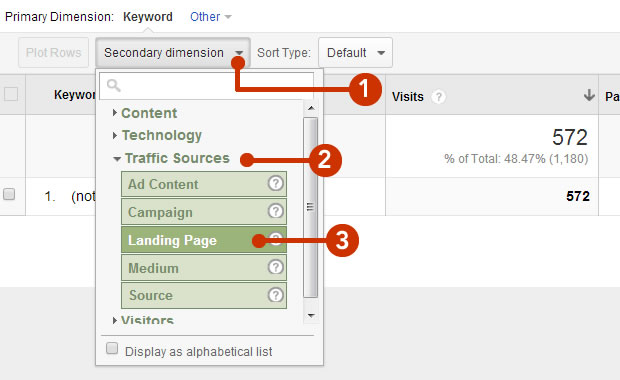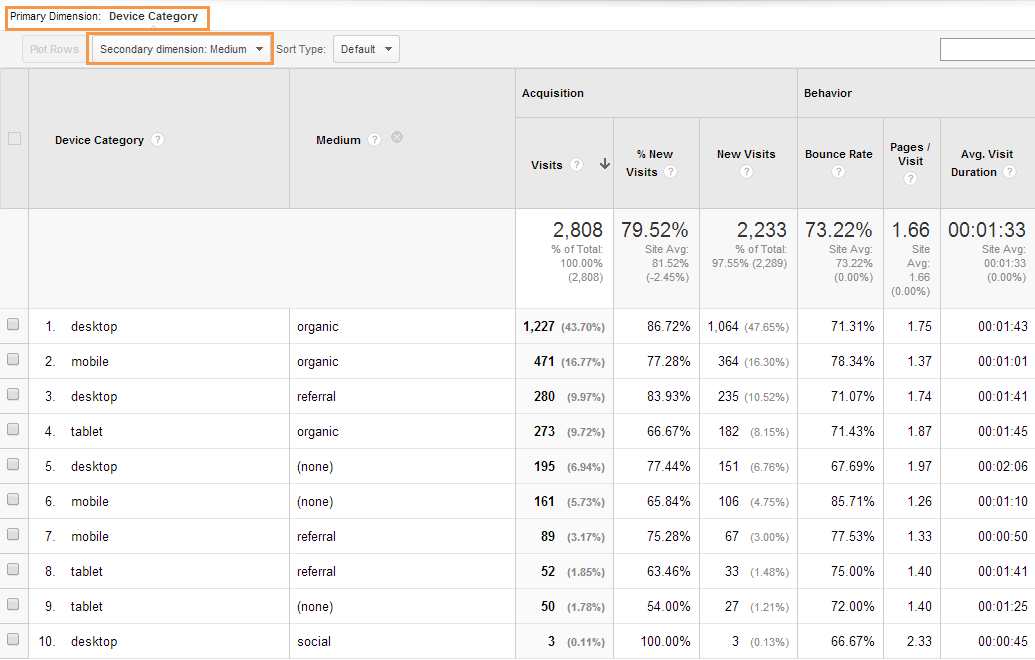Comprehensive Insights Making Use Of Secondary Dimension in Google Analytics
Comprehensive Insights Making Use Of Secondary Dimension in Google Analytics
Blog Article
Optimize Reporting Accuracy With Additional Measurement in Google Analytics
Recognizing how to take full advantage of reporting precision with second dimensions in Google Analytics can significantly improve the depth of understandings stemmed from data evaluation. By incorporating additional dimensions purposefully, marketing experts can discover hidden patterns and correlations that might not be quickly evident when analyzing main metrics alone. This nuanced method makes it possible for a more thorough understanding of user behavior and project efficiency, paving the method for even more targeted and efficient decision-making. The utilization of second measurements holds the essential to opening a wide range of important details that can change the effectiveness of digital marketing methods.
Recognizing Secondary Measurements in Google Analytics
To boost data analysis and gain deeper understandings right into customer actions, comprehending additional measurements in Google Analytics is imperative. Secondary measurements permit individuals to section and better dissect information past the main dimension picked. By integrating second measurements, analysts can refine their records to expose more detailed information concerning individual interactions on a website. While the key measurement may show the overall number of web page sights, including a second dimension such as 'source/medium' can supply insights right into where the traffic originated from. This extra layer of details makes it possible for marketing professionals to examine the performance of various advertising and marketing projects or networks in driving traffic to the site.
Furthermore, comprehending secondary dimensions is essential for developing much more customized reports tailored to details business goals. By picking the right combination of main and additional dimensions, analysts can uncover patterns, trends, and connections that may otherwise remain concealed. This nuanced strategy to information evaluation empowers companies to make enlightened decisions based upon a comprehensive understanding of individual habits throughout numerous measurements.

How to Apply Second Measurements
When leveraging secondary measurements in Google Analytics, the sensible application entails choosing particular information criteria to further refine insights beyond the key dimension's scope. To apply secondary dimensions effectively, start by accessing the report or dataset where you want to dive deeper into the information. Keep in mind that additional measurements assist supply context and granularity to your main dimension data, enabling you to remove more actionable and significant insights from your Google Analytics reports.
Leveraging Secondary Measurements for Insights
Making use of secondary dimensions in Google Analytics permits a much more comprehensive evaluation of data, using useful insights past the key dimension's extent. By leveraging secondary dimensions, individuals can dig much deeper right into the performance metrics of their website or app, revealing surprise patterns and patterns that might not be promptly evident when only checking out main measurements.
One key benefit of using secondary measurements is the capacity to segment and filter information extra precisely. This can assist marketing professionals and analysts better recognize the habits of specific individual segments, such as new site visitors versus returning site visitors, or traffic coming from different geographical locations.
Moreover, secondary measurements make it possible for users to compare and contrast numerous data factors within the exact same record, providing a more all natural sight of performance (Secondary Dimension in Google Analytics). For example, coupling the primary dimension of landing pages with second dimensions like gadgets or demographics can reveal which pages are most effective in involving users on different tools or from various market teams.
Essentially, leveraging secondary measurements in Google Analytics encourages customers to extract richer insights from their data, bring about even discover this more educated decision-making and ultimately, improved performance.
Best Practices for Secondary Dimensions
When analyzing data in Google Analytics, integrating additional measurements effectively boosts the depth of insights originated from the main metrics. To make one of the most out of additional dimensions, it is crucial to stick to finest methods that guarantee purposeful and exact coverage. It is crucial to pick additional dimensions that straighten with the main metric you are assessing. Choosing pertinent secondary measurements helps in supplying context and a more clear understanding of the data being examined.
Furthermore, it is advised to restrict the variety of additional measurements made use of in a single report to stay clear of frustrating the analysis with way too much info. Concentrating on a few essential secondary dimensions each time can result in more workable and focused understandings. In addition, consider try out various mixes of additional and primary measurements to discover one-of-a-kind trends and patterns that might not be evident when looking at the information in isolation.
Advanced Analysis Methods With Second Measurements
Exploring intricate data relationships with the strategic application of second measurements can reveal nuanced understandings that boost the depth of evaluation in Google Analytics. By incorporating second dimensions with primary information collections, sophisticated analysis techniques can be utilized to draw out valuable info. One such strategy is friend analysis, where secondary dimensions permit the division of customers into teams sharing common characteristics. This approach allows a much deeper understanding of user actions patterns with time, assisting in the identification of fads and the assessment of marketing projects' effectiveness.
Additionally, second dimensions can improve the evaluation of conversion courses by supplying added context. Comprehending the various touchpoints a user interacts with prior to transforming can be crucial in enhancing the client journey - Secondary Dimension in Google Analytics. By why not try these out using secondary dimensions to delve into specifics such as website traffic resources or gadgets made use of, marketers can tailor strategies to target high-converting networks successfully
Conclusion

To boost information analysis and gain deeper insights right into individual behavior, understanding secondary measurements in Google Analytics is vital - Secondary Dimension in Google Analytics. Additional dimensions enable customers to segment and additionally dissect information past the main dimension chosen. While the main measurement may display the overall number of web page views, including a secondary dimension such as 'source/medium' can provide insights into where the traffic originated from.When leveraging additional dimensions in Google Analytics, the functional application entails selecting certain data specifications to additional refine understandings past the primary measurement's extent. Bear in mind that secondary measurements aid supply context and granularity to your key dimension data, allowing you to extract even more actionable and significant understandings from your Google Analytics reports
Report this page